Give Indiana wildlife a hand and save on your taxes
Did you know that more than $200,000 from the Nongame Wildlife Fund is used each year for projects to benefit the more than 750 species of nongame & endangered wildlife in Indiana?
In 2018, DNR partnered with Purdue University on a new project to develop and prioritize conservation strategies for freshwater mussels, one of the most imperiled animal groups in Indiana. Their complex life cycle requires a specific fish host in order to reproduce. Watch this video of a yellow sandshell displaying to attract its specific fish host.
Your contribution to the Nongame Wildlife Fund will help support these important projects and is also tax deductible.
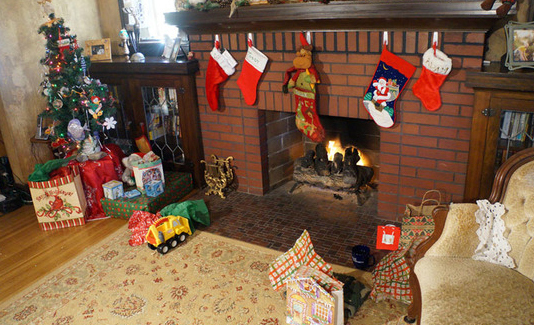 Holiday gift giving made easy
Are you looking for that perfect gift for your favorite hunter, trapper or angler?
Give a gift certificate to buy a hunting, trapping or fishing license. It's the perfect gift for that person in your life who has all the equipment they need.
Hunting seasons beginning in December
Deer muzzleloader: Dec. 8–23
Turkey archery: Dec. 8 to Jan. 6, 2019
Mourning Doves: Dec. 8 to Jan. 4, 2019
Geese: Dec. 15 to Feb. 10, 2019 (North Zone)
Dec. 1 to Feb. 10, 2019 (South Zone)
Crow: Dec. 13 – March 1, 2019
Ducks, coots, mergansers: Dec. 22–30 (North Zone)
Dec. 1 to Jan. 20, 2019 (South Zone)
Special antlerless deer: Dec. 26 to Jan. 6, 2019
 Limited river otter trapping season still open
The 2018–19 limited river otter trapping season opened on Nov. 15. Trappers are limited to two otters during the season and the statewide quota is 600 otters.
The season will close on March 15 or when the statewide quota is met, whichever comes first. Any trapped river otters must be reported within 24 hours of harvest online or by phone through the CheckIN Game system, and otters must be registered in person within 15 days of the month of harvest. The list of registration stations is available on the otter trapping page.
Upon registering the otter, the trapper must turn over the carcass to DNR staff so valuable data can be collected and you can receive a tag for their otter pelt.
Black bear confirmed near New Albany
A black bear was hit by a vehicle in the New Albany area on Nov. 18. The injured bear wandered into heavy brush after the accident. As bear populations expand in neighboring states, it’s only natural that they become more common in Indiana. Black bears are usually not aggressive toward humans.
Most problems with bears arise when bears associate food sources with humans. Do not feed bears. Doing so increases the likelihood of negative bear-human interactions.
Report bear sightings online. Photo and video evidence of scat, tracks or the animal will be investigated by DNR biologists.
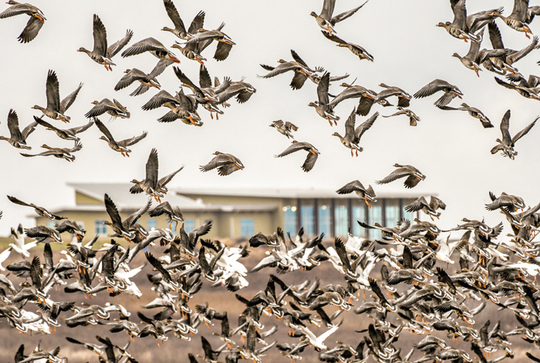 Winter waterfowl surveys
Each winter Fish & Wildlife conducts an annual mid-winter waterfowl survey. These surveys provide information about the status and distribution of waterfowl in the Mississippi Flyway.
Biologists throughout the state will conduct surveys as birds continue on their migration routes. This information is important to help biologists monitor waterfowl not only at the state level, but also at the national level. Biologists are interested in surveying ducks, geese, swans and other birds such as bald eagles and sandhill cranes.
Waterfowl hunting regulations
Weekly waterfowl counts
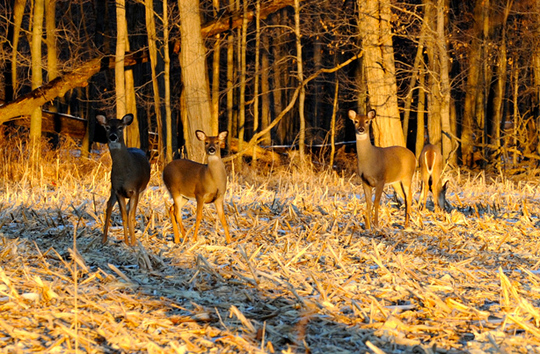 Deer muzzleloader season opening soon
Deer muzzleloader season opens on Dec. 8 and goes through Dec. 23. As a reminder, the deer firearms license is not valid in the muzzleloader season. Check out our deer hunting frequently asked questions.
Game check-in options and reminders
Hunters have 48 hours to check in a deer that has been harvested. Be sure to enter information accurately when checking in a deer. Hunters can check in their game online through the CheckIN Game system, in the Fish & Wildlife Online Services application, at an on-site check station, or by phone.
The online CheckIN Game system and Fish & Wildlife Online Services can be used with any Internet-connected device. Both options are free, and you don’t need to set up an account or have a special app to check in your game. You can purchase licenses, check in game, view your check-in history, get your HIP number, purchase a gift certificate or make a donation through your account.
The phone-in option (1-800-419-1326) carries a $3 fee (Visa or Mastercard only).
At on-site check stations, station managers will enter information online through the CheckIN Game System. On-site check-in stations no longer use paper log books or issue metal tags.
 Sandhill cranes still flocking to Jasper-Pulaski
Sandhill crane numbers usually peak at Jasper-Pulaski Fish & Wildlife Area in mid-November, but flocks can typically be seen through mid-December. The best times to view the flocks from the Goose Pasture viewing area are around sunrise and sunset.
Latest deer harvest numbers & more
Looking for information on the recent deer harvest? You can find the latest harvest numbers, deer-processing videos, recipes, deer biology and more on our deer webpage.
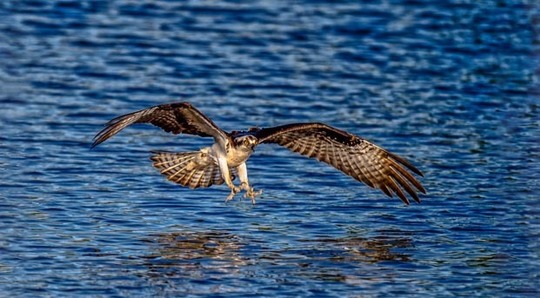 Photo courtesy: Mark Hoffman Photography
Osprey: A conservation success story
The Natural Resources Commission recently approved several changes to Indiana’s State Endangered and Special Concern list. Collectively, the State Endangered and Special Concern lists are considered Species of Greatest Conservation Need in Indiana’s State Wildlife Action Plan.
Among the changes to the lists are a couple of success stories. Most notably is the downlisting of osprey from State Endangered to Special Concern. The extraordinarily successful Osprey Reintroduction Project is a great conservation success story and one that speaks to the value of diverse partnerships, the Indiana Nongame Wildlife Fund and the State Wildlife Grant program. You can view all of the recent changes online.
Time to think about wildlife habitat
Are you a homeowner or landowner who wants to see more wildlife? Now is a good time to start planning those wildlife habitat projects that can be accomplished in mid-to-late winter.
Generally, the ground is frozen and there is little potential for interfering with nesting wildlife. Some suggested habitat management practices that can be accomplished during the winter months are:
• Creating brush piles for small mammals, songbirds, and other wildlife to use.
• Woodland edge enhancement, forest openings, and fencerow rejuvenation.
Using a technique called hinge cutting, feathered edges and forest openings can be created. These areas can create wildlife habitat between agricultural areas and more mature woodlands, or within woodlots.
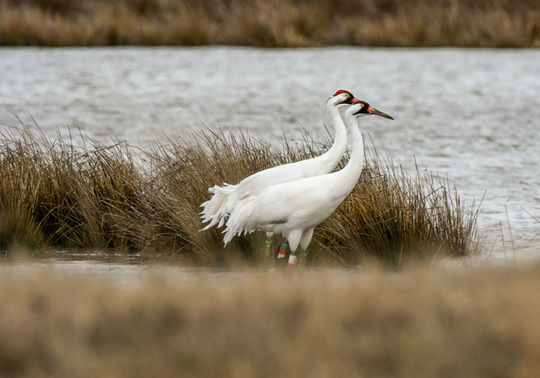 Bird of the month: whooping crane
Whooping cranes (Grus americana) are one of the rarest birds in the world. They stand 5 feet tall and are easily identified by their size, dark red crowns and black mustaches, which contrast against their snowy feathers. Their beautiful plumage and size grab viewers’ attention, especially when they mix with a flock of their smaller, drabber cousin species, the sandhill crane.
Only about 850 whooping cranes exist in the world today. In the Midwest, we see around 100 individuals migrating each year in the spring and fall. These represent the experimental Eastern migratory population, established in 2001 in an effort to create a self-sustaining population of whooping cranes in the eastern U.S. At first, birds nested in Wisconsin and migrated south to Florida with the guidance of an ultralight aircraft. More recently, birds have instead begun stopping in Indiana to winter. Now, a remarkable 30 whooping cranes winter in Indiana.
As with any wildlife reintroduction program, the Eastern migratory population has experienced challenges. Breeding has been plagued by predators, parasitic black flies, infertility, and nest abandonments. These have prevented the population from sustaining itself. Federal, state, and nonprofit agencies are working together to resolve these issues through monitoring and improving management techniques.
You can help. Be sure to view the birds only from a distance and do not attempt to approach or feed them. Whooping cranes that learn to approach vehicles for food are often killed by cars. Illegal shooting is also a concern—five cranes have been shot by poachers in Indiana since 2009. You can help to conserve whooping cranes by keeping a distance of at least 100 yards and reporting any activity that attempts to harm or disturb them to 1-800-TIP-IDNR. You can also report sightings, which assists in monitoring efforts.
More
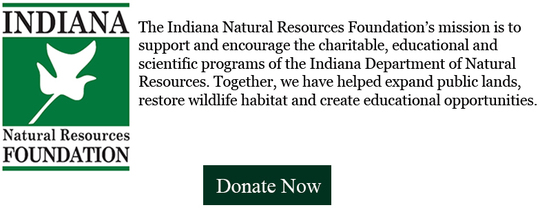

About Fish and Wildlife Management in Indiana
Fish and wildlife management and public access are funded by fishing and hunting license revenue and also through the Wildlife and Sport Fish Restoration Programs administered by the U.S. Fish & Wildlife Service. These programs collect excise taxes on sporting arms and ammunition, archery equipment, fishing equipment, and motor boat fuels. The money is distributed among state fish and wildlife agencies based on land size and the number of licensed anglers and hunters in each state. Find out more information about fish and wildlife management in Indiana at Wildlife.IN.gov.
|